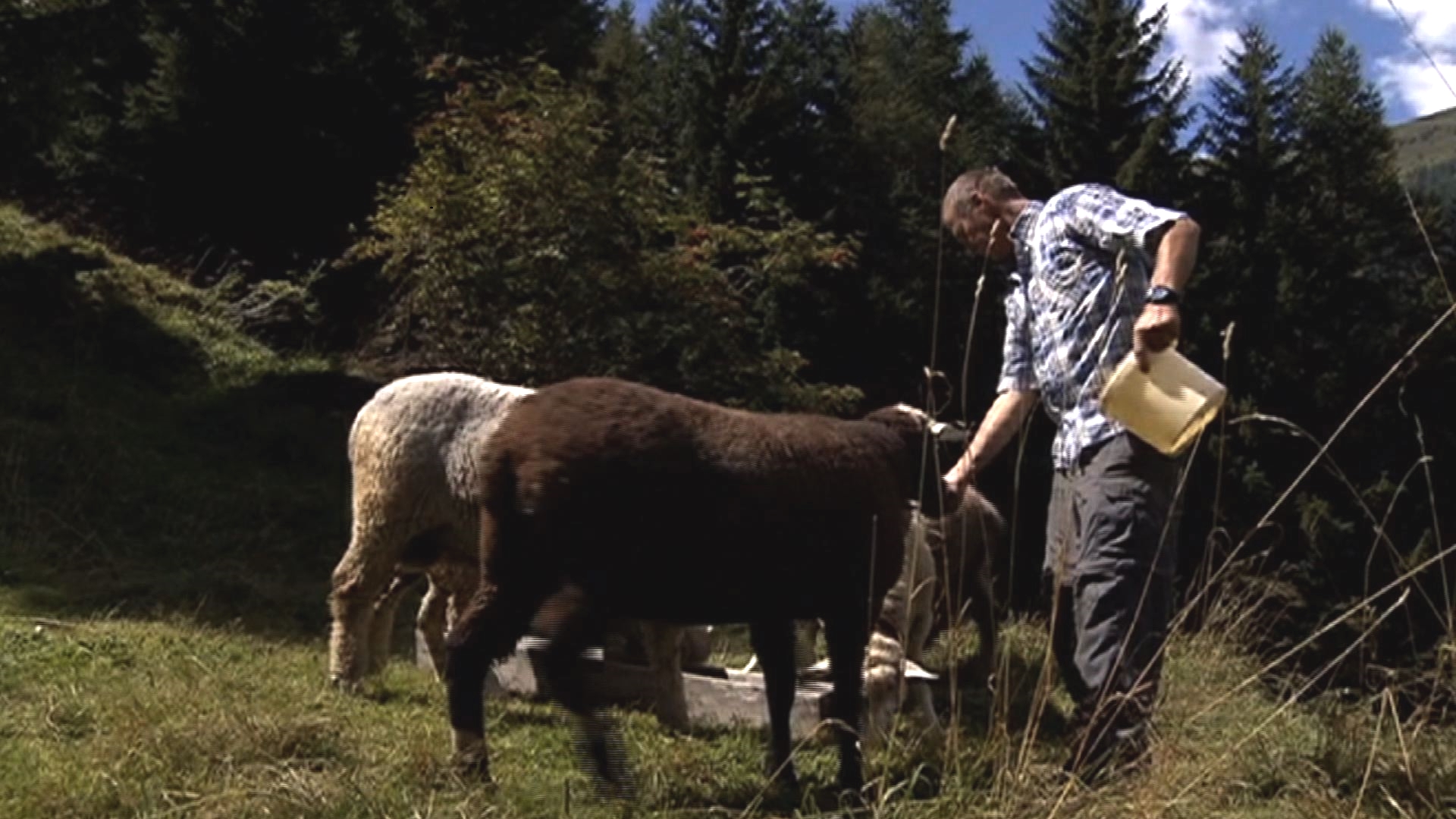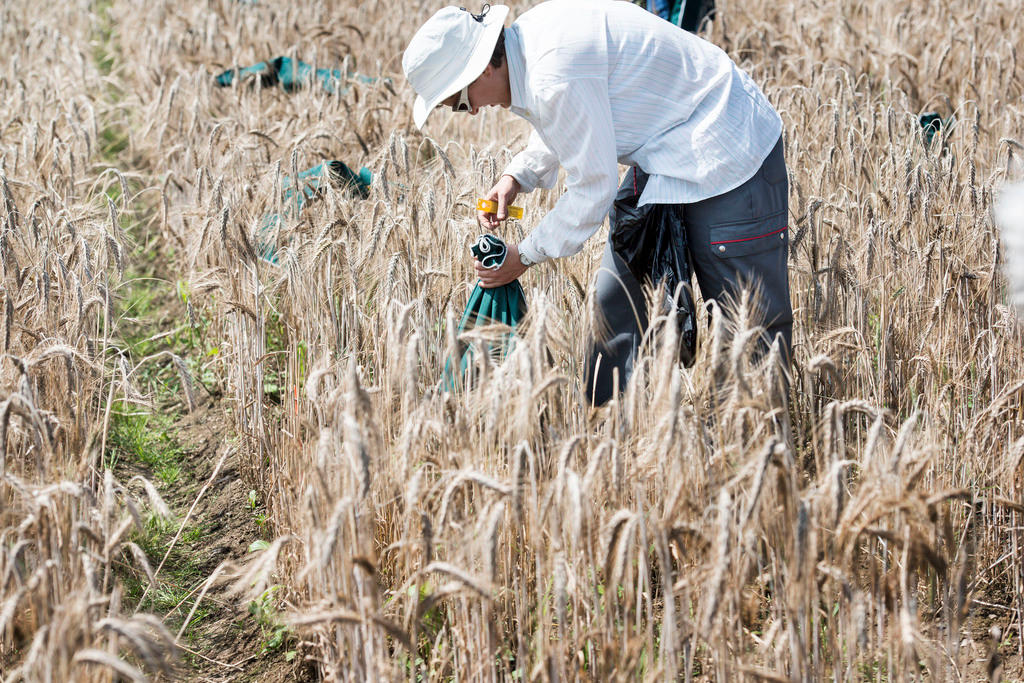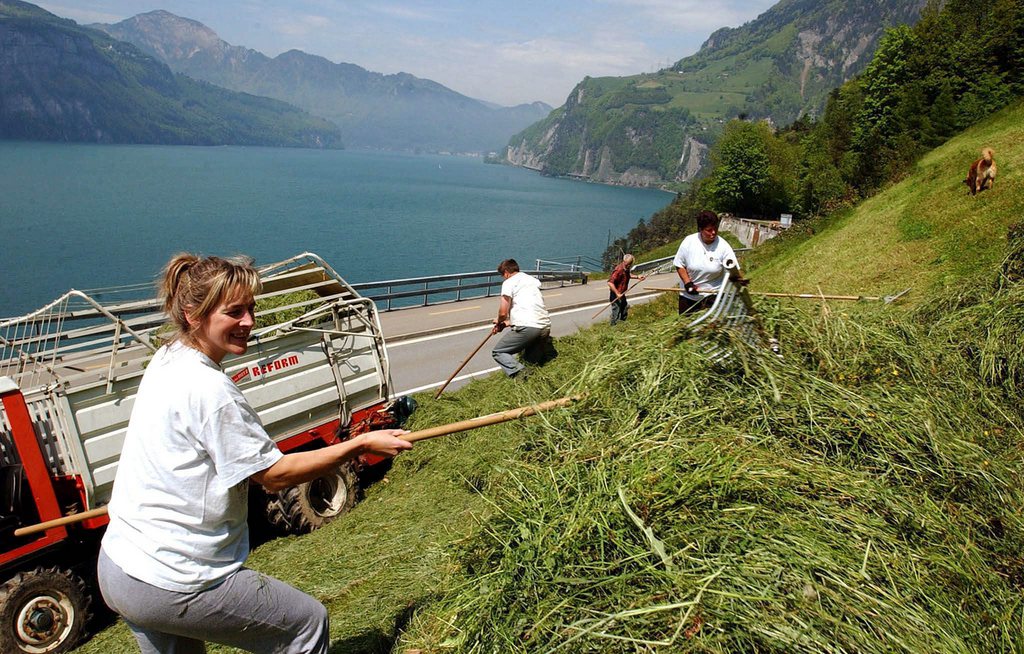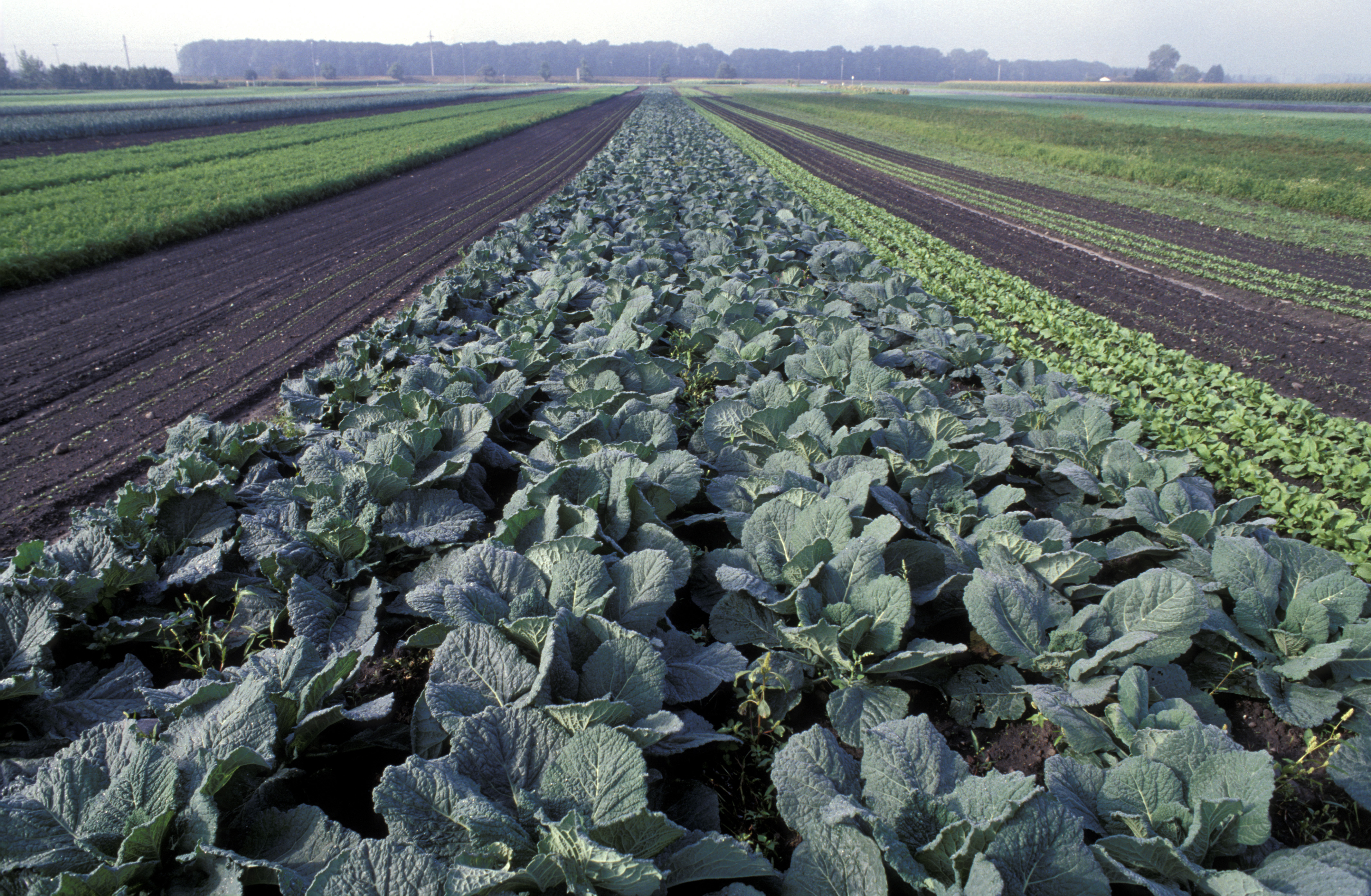Agriculture
Switzerland is traditionally an agricultural country. When neutral Switzerland was isolated during the Second World War, the Swiss farmers fed the nation.
Editorial note: this content was current as of July 2017 and is no longer being updated.
Meadows and pasture make up three-quarters of Swiss farmland, with cereals and vegetables being confined to the lowlands. About one third of farms are involved in crop production. For more on Swiss agriculture see the Federal Agriculture OfficeExternal link website.
Traditional way of life
In the Alps there is a traditional way of life based on the keeping of flocks and herds. It requires a sort of vertical movement between the mountain pastures and the valleys below.

More
Testing new ways of protecting mountain sheep
As well as cultivating crops, farmers keep herds of cattle, sheep and goats, which live down in the valleys during the long winters, but which are herded to the “Alp”, the upland pasture, for the summer season, which lasts from June to September.
The herdsmen actually go up into the alpine pastures and live there during the summer in traditional rustic chalets, looking after the animals and making cheese. They still do this, although the car and recently the mobile phone have done a lot to reduce the isolation.
While Swiss farmers are best known for their dairy produce, early industrialisation also prompted the beginnings of food processing. Strictly speaking, cheesemakers could be counted among the first food processors.
Crisis in agriculture
Like everywhere else, there is now a crisis in Swiss agriculture. Traditional small-holdings are no longer profitable or even viable.
Before and during the Second World War, some 25% of the population worked in agriculture. Today that figure is just 3%. Many of the remaining farmers survive only because they have taken up a second occupation.
Farms with a surface of more than 20 hectares have bucked this trend, though, with their numbers increasing. Swiss farmers need CHF2.5 billion in direct payments or state subsidies every year, whether or not they face competition. Some estimates suggest that supporting farming costs the Swiss taxpayer CHF4 billion annually.
Direct payments have the advantage of not simply rewarding overproduction. They can selectively promote sectors of farming working in line with Swiss agricultural policy, for instance, organic farming. Nowadays over 12% of cultivated soil is farmed according to strict organic requirements.
Ultimately many farm products could be imported more cheaply than produced domestically, but Switzerland wants to retain a level of self-sufficiency in food production.
Farming’s future?
Swiss governments have seen fit to prop up agriculture to an even greater extent than the European Union, which spends €59 billion per year on farm subsidies.
This is in contrast with the surrounding EU countries, where market forces have prevailed, often with unpleasant consequences.
Distinctive minorities such as the Romansh-speaking people in Graubünden have been hard hit by emigration to the “lowlands”. There is also a strong farming lobbyExternal link which upholds the preservation of the sector.

In compliance with the JTI standards
More: SWI swissinfo.ch certified by the Journalism Trust Initiative














You can find an overview of ongoing debates with our journalists here . Please join us!
If you want to start a conversation about a topic raised in this article or want to report factual errors, email us at english@swissinfo.ch.